Pocket aces is what every Texas Hold’em player prays for before peering down at their hole cards. There are few experiences in life as exhilarating as seeing pocket rockets, but even a strong hand like aces can fall victim to critical mistakes.
To avoid making value-killing errors with pocket aces, you must first recognize the three biggest mistakes players make with them.
- Trying to Play Tricky Preflop With Pocket AA
- Overplaying Aces When They’re Marginal Made Hands
- Not Going for Thin Value with Pocket Aces
Minimizing the mistakes you make at the poker table will produce profit for you in the long run. Pocket aces are a safe bet when it comes to seeing profit, studying what not to do with them will guide you towards lucrative pots.
Trying to Play Tricky Preflop With Pocket Aces
A common misconception about the game of poker is that it is heavily based around the ability to deceive. While a winning player does need to bluff in the right spots, maintaining the fundamentals will take you much farther than trying to trick opponents.
Despite pocket aces being the strongest starting hand in Texas Hold’Em, they are still vulnerable to getting outdrawn. If you limp into a pot there are likely other players willing to do the same, the more players in the hand the more hands you have to worry about beating. Some poker players who like to get “tricky” limp hoping another player will make a raise they can then three-bet. Such a strategy is great when it works, but when it doesn’t you have multiple live hands seeing the flop for free. Unless you are limping and reraising with junky hands as well as aces, your opponents will soon figure out your strategy.
You will see the most profit by putting opponent’s in situations where they get their money in poorly, raising encourages them to contribute even when they are well behind your aces.
Properly Raise and Reraise Preflop With Pocket Aces
Utilizing the fundamentals when playing pocket aces means knowing how much to three-bet when facing a raise. Keep in mind your stack size dictates the appropriate strategies and bet sizing you use. The following chart shows the ideal sizing of your three-bets:
How Much To Three-Bet When Facing A Raise With Aces
| In Position | 2.5x – 3.5x |
| Out Of Position | 3x – 4.5x |
| Facing Multiple Callers | 3x the initial raise + all other additional money in the pot |
By using these raise sizes you properly put your opponents in spots where they are not getting good pot odds. When opponents fold to sizable raises you take down the hand, and when they do call, you have added a lot of value to a pot you have a good chance of winning.
When To Trap With Aces Preflop
While there are very few instances where you should get tricky or “trap” with your aces, it is worth noting what spots these are and how to properly navigate them. The best time to trap with pocket aces is when the stack-to-pot ratio is low when you call, especially when you can play preflop in position. As your stack is less and less the size of the pot, you don’t mind slow playing as it is easier to get all of your money into play. Your opponents will be drawing relatively thin, and don’t see much equity when they outdraw you.
Let’s take the following scenario into account…
20 Big Blinds On The Button Facing A Lojack Raise Holding Aces
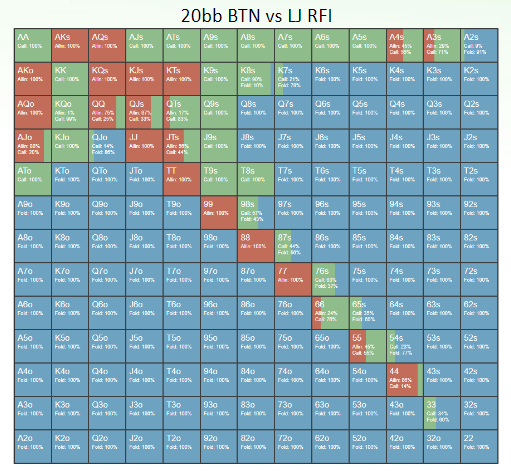
You are on the button with pocket aces and the player in the lojack raises after being folded to. The Game Theory Optimal (GTO) play is to go all-in with most pairs as well as premium high cards both suited and offsuit. However, referencing the chart, you will see green portions representing the decent percentage of hands that call rather than shove, with both pocket aces and kings being calling hands (red representing when to go all-in). Calling is preferred with pocket aces as the stack-to-pot ratio is going to be very low.
Many recreational players will make the mistake of following a push/fold chart blindly and only elect to move all-in or fold, but such a strategy scares away opponents that could provide your aces value.
Let’s look at another spot…
40 Big Blinds On The Button Facing A Big Blind Three-Bet With Pocket Aces
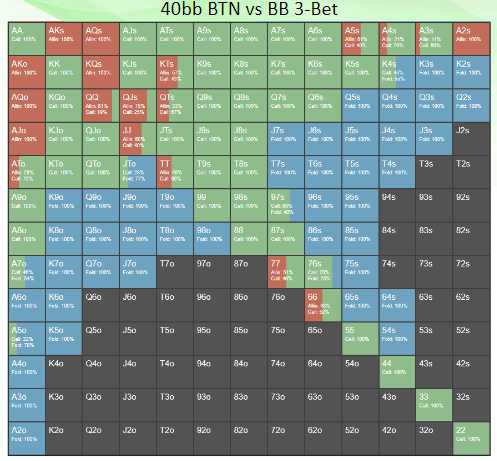
In this situation, it folds to you on the button and following your raise, the big blind three-bets you. Much like the previous example, there is already a significant amount of chips in the pot, producing a shallow stack-to-pot ratio. Your shallow stack-to-pot ratio allows you to call with aces, providing your opponent three streets to contribute to the pot.
Overplaying Pocket Aces When They’re Marginal Made Hands
Especially amongst small stakes players, overplaying marginal-made hands is one of the biggest mistakes I see on a regular basis. Of course, pocket aces is a strong, premium hand, but what are situations in which it becomes a marginal made hand?
Common situations when A-A becomes a marginal made hand:
– When you are deep stacked on a connected board
– When you are multi-way
– When tons of money goes into the pot and you have one pair
Deep Stacked On A Connected Board With Aces
Consider a $1/$2 cash game where you raise preflop from the lojack with A♠-A♥ and only the big blind calls. The flop comes 6♠-5♣-4♥ and your opponent checks to you.
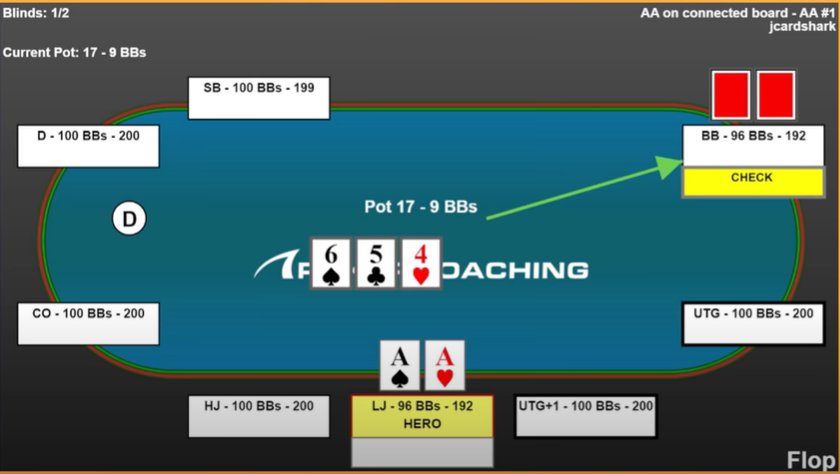
Instinctively, many recreational players would look at their hand, look at their giant stack of chips, and would continue firing wanting to get the most out of their pocket aces. While it may sound counter-intuitive, the proper play in this spot is to check back.
When you raise from the lojack seat, you don’t have many strong hands in your range. While you do have some sets and straights, for the most part your range consists of overpairs and unpaired high cards. Facing your range, if your opponent hits you with a check-raise they take all of your overpairs and turn them into bluff catchers. Despite you having aces well within your range, your opponent can just as well have 8-7 or two pair in theirs.
By allowing this flop to go check-check, you can call bets when your opponent attempts to bluff on the turn/river, or you can bet when safe cards come across the board. A big mistake novice players make is executing a pot-sized bet on the flop citing protection, only to over-commit themselves and lose it all when their opponent has it.
If you are playing a table full of absolute nits, you can rationalize betting for value on this board, but as you progress and face tougher opponents you need to maintain balance and the fundamentals.
When The Big Blind Leads The Turn On A Connected Board
Following the flop going check-check, the turn card is the K♥ and your opponent leads out for $15.
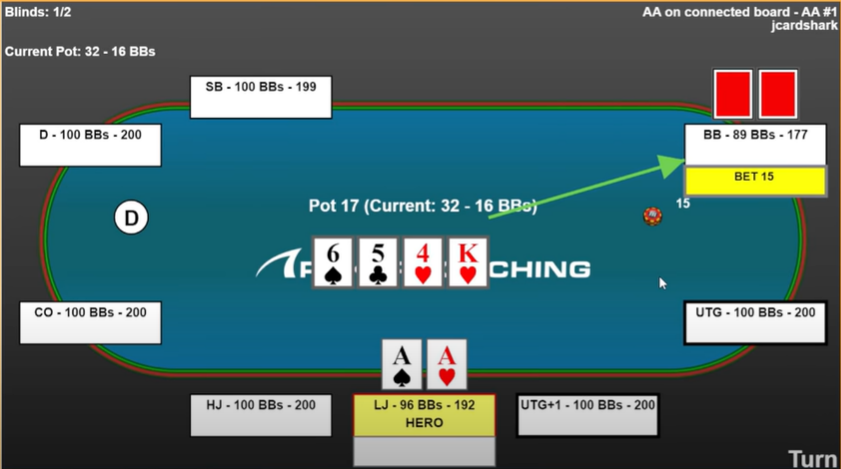
The $15 lead is somewhat suspicious as you have plenty of kings in your range, but regardless you should still call with your pockets aces.
Remember, you want to play in a way that encourages your opponent to bluff and overvalue hands. If your opponent has a king, they will likely think it is good despite you having them dominated with aces. It may be tempting to raise, but that should be avoided as there is still a chance you are behind.
Facing Another Lead On The River
Following the Q♠ coming on the river, your opponent leads out again for $30.
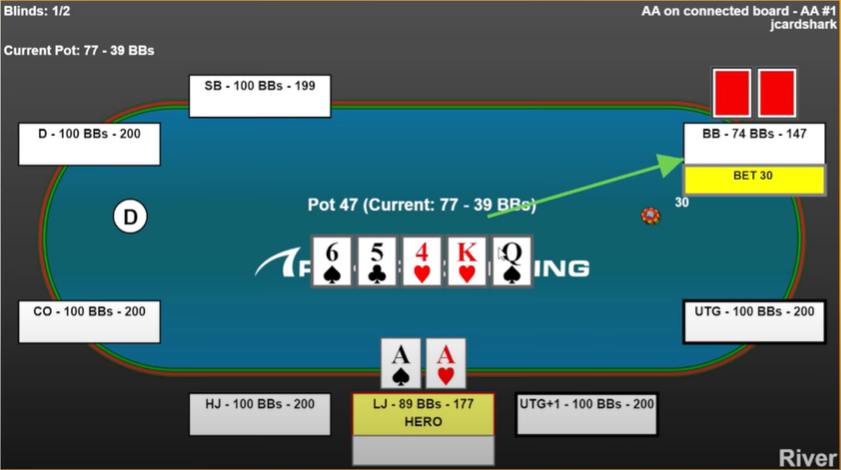
Despite the small bet from your opponent, this is another easy call. The sizing of your opponent’s bet may entice you into raising, but much like similar situations, raising only creates another opportunity for your opponent to check-raise you. In this example, the big blind was holding 6♦-5♦, proving just how disastrous a raise would have been.
Realize the saying “a penny saved is a penny earned” is extremely applicable to the game of poker. While you may have lost over $50 in that hand, a worse player would have lost their whole stack.
Pocket Aces On A Paired Board
Let’s consider another hand. It folds to you in the lojack and you look down at A♠-A♥.
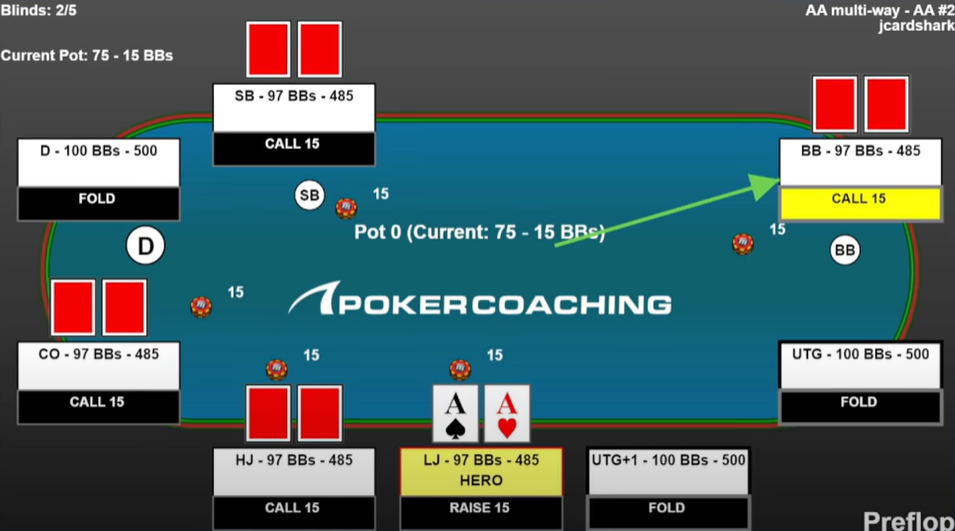
You raise $15 and the hijack, cutoff, and both blinds call. The flop comes J♠-J♥-9♠ and it checks to you.
This is a spot where many players make a bet, sometimes even a big bet, but that isn’t the move to make. Players will rationalize a bet pointing out the number of draws on the board, but there is a high likelihood with this many hands in play that someone has a jack. Additionally, a prominent bet would force any hands you would beat into folding, keeping them from building the pot.
It checks around to the hijack, who bets $25 and is called by both the cutoff and the big blind.
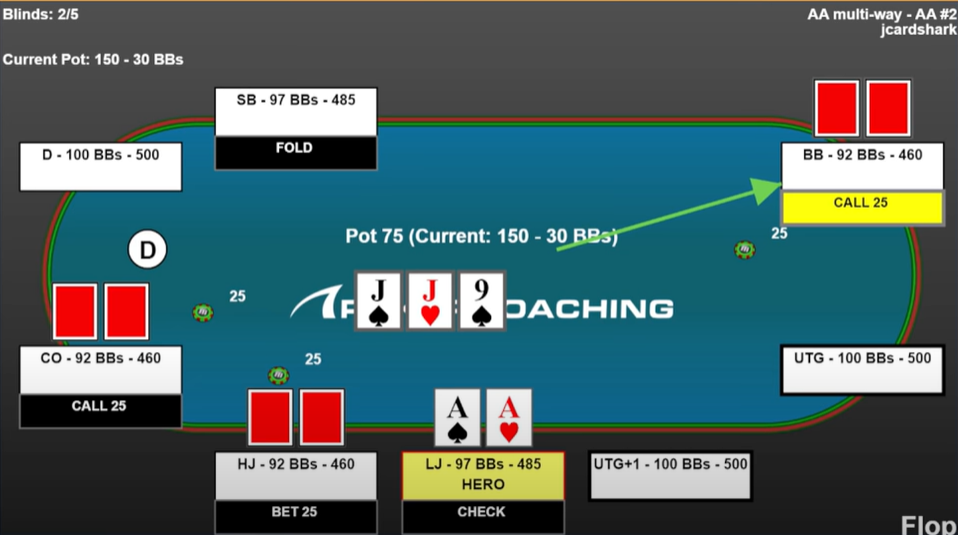
Calling this bet to see another card is not terrible, but most of the time you will be contributing to a pot that will not come your way. It may seem nitty, but this would be the time to fold aces.
If you were playing in a small stakes game populated by bad players, calling would be okay, but many players will elect to raise thinking they have the best hand despite the board being paired. Just because your opponent bets small doesn’t mean they aren’t holding a premium hand, don’t assume you know exactly how your opponents play as trying to read minds will deplete your bankroll.
Again, it may feel like a tight play, but this is the proper spot to let go of your aces.
Pocket Aces In The Hijack
Considering another hand, you are sitting in a $1/$3 game when you are dealt A♠-A♣ in the hijack. It folds to you, you raise $10 and only the big blind calls.
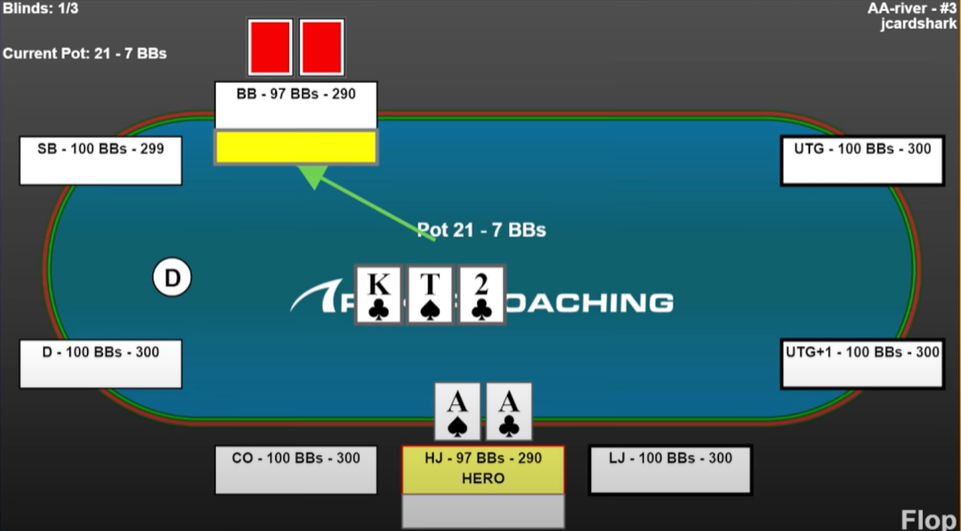
The flop comes K♣-T♠-2♣, your opponent checks and you value bet $15.
On this board, a large bet is preferred considering how well it connects with your opponent’s range. Playing deep stacked, king-high boards are commonly bet heavily by the preflop raiser, giving you a proper spot to bet.
Your opponent calls and the turn is the 8♥. The big blind checks, and you bet $50.
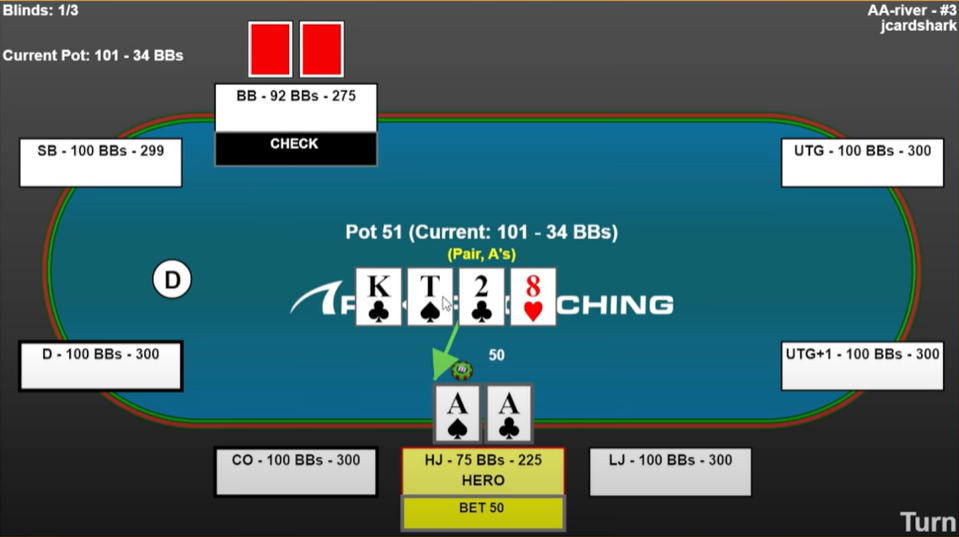
When a blank card comes on the turn, it is a great spot to keep betting. While some backdoor draws come in with the 8♥, continue betting for value and protection with hands like aces and kings.
Your opponent calls the $50 bet. The river is the 9♥ and your opponent donk leads all-in for $225.
Certainly an annoying spot, unless you know your opponent is capable of battling, this is an easy fold. While some players will mostly lead with their busted draws to bluff, most of the time they will be holding a straight to crack your aces.
Not Going for Thin Value with Pocket Aces
Most players, especially in small stakes games, struggle betting for thin value with pocket aces.
Player’s failure to pursue thin value usually comes from the fear of being bluffed off of their pocket aces. It is important to realize that most of the time, if you go for thin value with pocket aces you will not get raised. If you do get raised, your decision is easy: just fold!
An Example Of Going For Thin Value With Pocket Aces
You sit down to play in a $2/$5 cash game. You look down at A♠-A♣ on the button, it folds to the lojack who bets $15. It folds around to you and you three-bet $50, the lojack then calls.
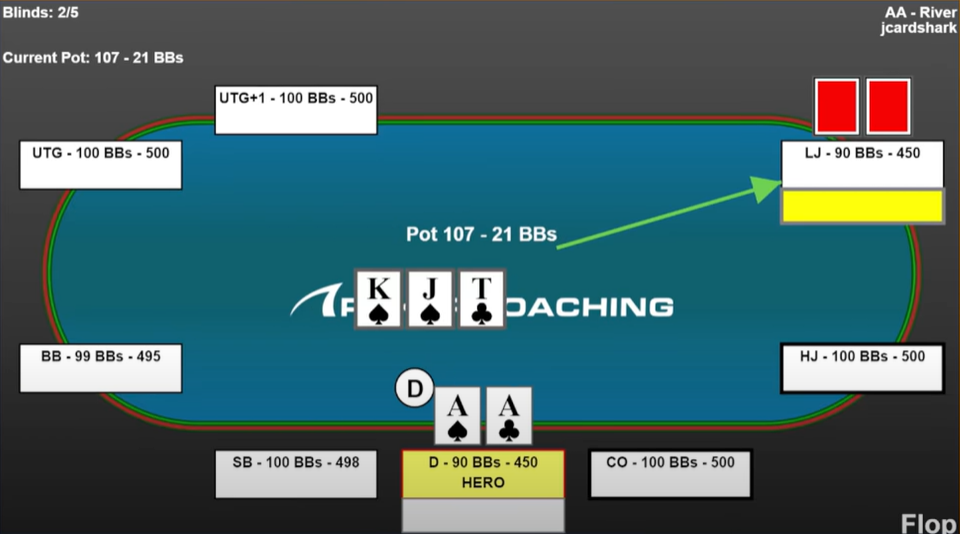
The flop comes K♠-J♠-T♣, your opponent checks and you bet small for $25. On flops like this with aces, betting frequently for small sizes is the ideal strategy.
Your opponent calls and the turn card is the 6♦. Following another check from your opponent, this is a spot where you should check as well. In spots like this, consider if you are upholding a GTO or pure exploitative strategy before proceeding. A lot of players will always check-raise better hands on the flop, but strong player will be able to check-call hands like A-Q to keep you in the hand.
Going For Thin Value
The river is the 2♠ and your opponent checks again. Most small stakes players are happy to check back what is likely the best hand, but intentionally make the mistake of not going for thin value. Even though the flush came in and they may not call with a jack, you should still bet half pot for value. While a smaller bet may sound more appealing than a half pot bet, a proper GTO strategy will rarely have you betting small on the river when you have position.
You bet $80 and get called, and your opponent flips over A♦K♦. What you should take away from this hand is how willingly people will check-check the river when the flush comes in, despite beatable hands in their opponent’s range that will call a bet.
Pocket Aces In The Cutoff
Playing a $1/$3 cash game, you look down at A♥-A♠ in the cutoff and raise $10. Only the big blind calls, the flop comes J♥-7♠-6♠ and your opponent checks to you. You make the standard, small continuation bet for $15 and they call. The turn is the J♠ and your opponent checks again.
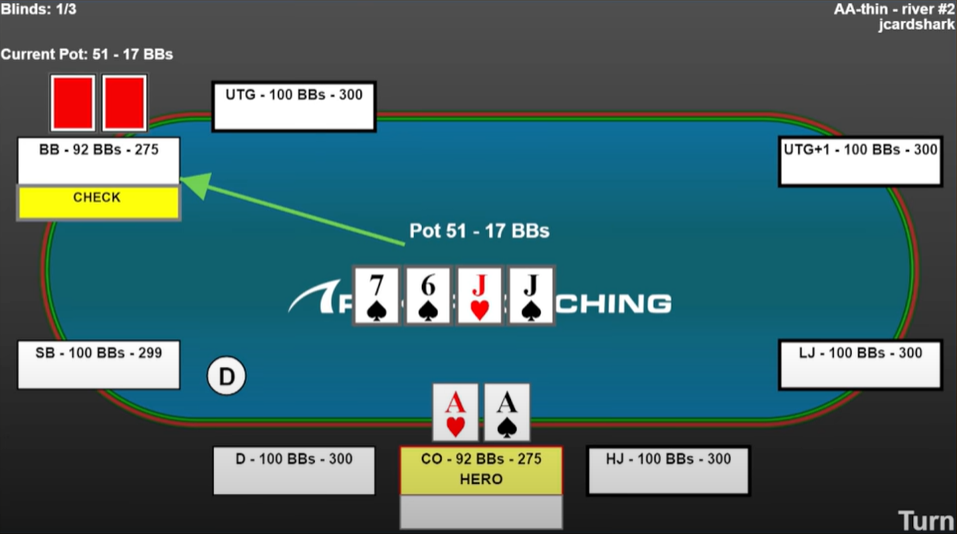
The second jack on the turn is certainly not ideal, but what is the best way to proceed? With plenty of jacks and flushes in your opponent raise, it is best to check back as when you get raised it is absolutely awful.
You check back and the river is the 5♥. Following another check from your opponent, you now have a prime opportunity to bet for thin value. It is easy to assume there are not many hands capable of calling in your opponent’s range, but consider hands like pocket tens or a paired seven before executing the river check.
You bet $35 and your opponent goes all-in, definitely brutal, but you know it is okay to fold these aces because they are behind. Just because you have aces doesn’t mean you should over value them, you must be able to get out of the way when you know your aces are no good. Many players would look at this hand to rationalize checking and not going for value on these rivers, but such a strategy not only leaves value on the table but makes you extremely easy to play against.
Conclusion
When you look down at the strongest hand in poker, you feel invincible. While pocket aces certainly give you an edge, without proper study not only do you lose value with them, but you are also vulnerable to getting stacked. As with anything within the game of poker, the separation is in the preparation, to be a master of the game you must first master the hands you know you will play every time you are dealt them. Take the advice from this lesson, review it until it is memorized, and then review it some more at a later date in case you need to brush up.
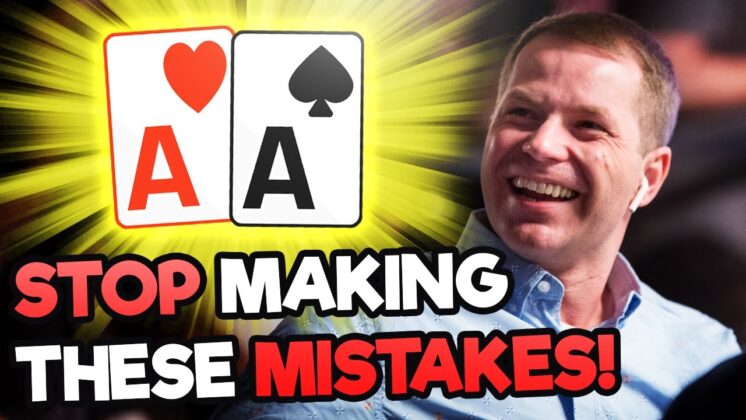
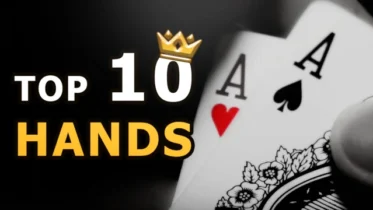


Pingback: Homepage